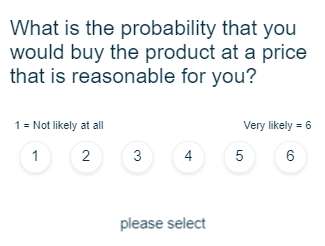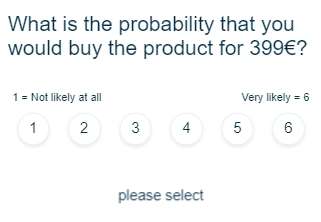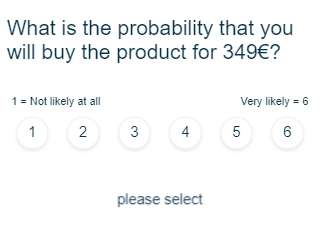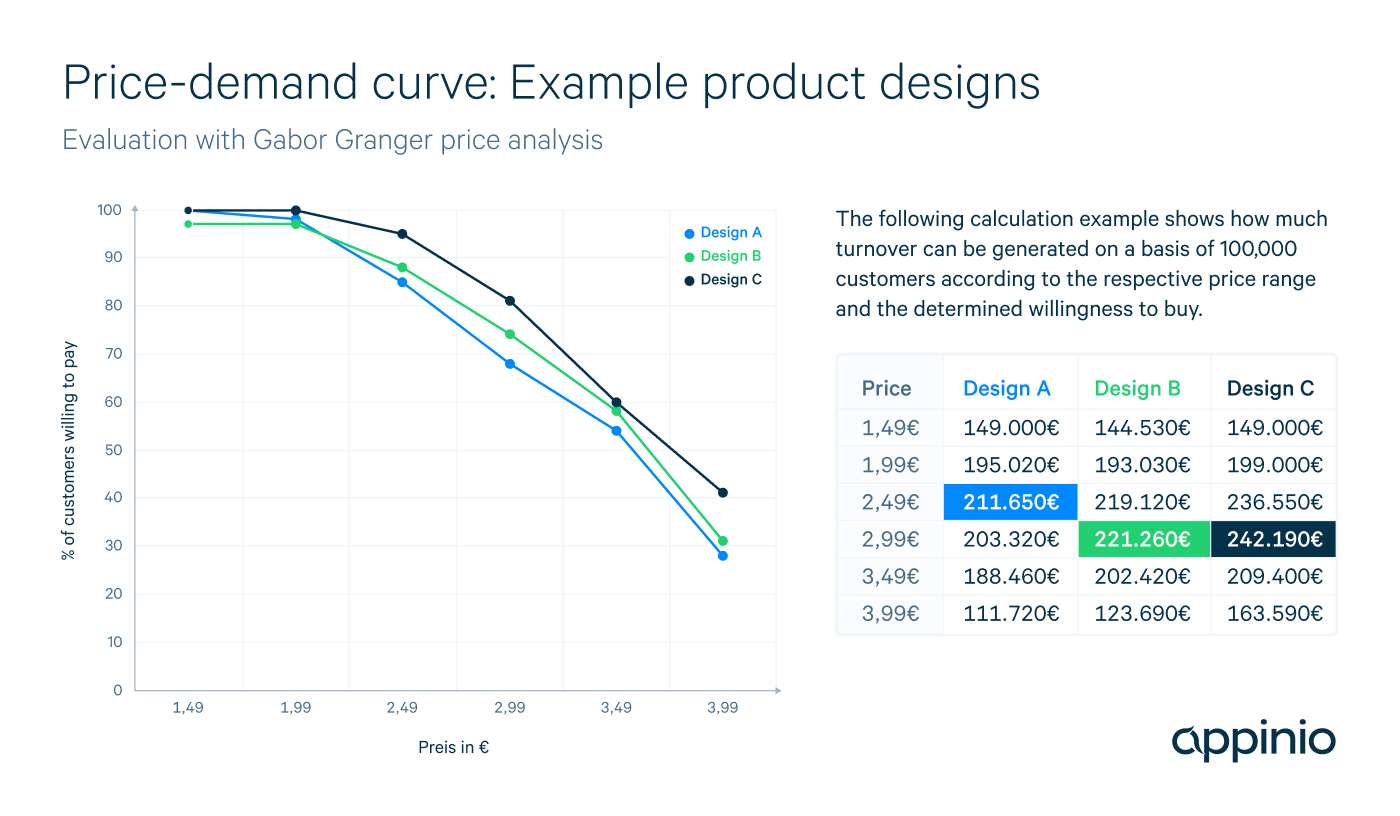Pricing Analysis: The Gabor-Granger Method
Appinio Research · 20.10.2022 · 9min read

Content
Setting the right price for a product or service is a crucial factor for any business to succeed.
In order to achieve this, it's important to understand the preferences of your customers in advance.
This includes knowing the amount by which you can increase your prices without risking a significant decrease in customer demand, and identifying the point at which most customers would no longer be willing to pay.
To help with this, there are a number of methods available, including the Van Westendorp method and the Gabor-Granger method.
The latter approach involves using a price-demand function to determine the optimal price for your product or service and it is teh method we are going to explore in this article.
Want to run your Gabor-Granger pricing analysis straight away? Talk to out expert!s
What is the Gabor-Granger method?
The Gabor-Granger method is a way to gauge consumer interest in a specific product or service across a range of predetermined prices.
Participants are asked to indicate their likelihood of purchasing the product at various price points, which is then used to establish a price-demand function.
This function can then be used to determine the optimal price for the product or service under various sales scenarios.
The Gabor-Granger method is particularly useful in answering questions such as:
- Can prices be increased without a significant decrease in sales?
- At which price points do consumers show a disproportionate increase or decrease in willingness to pay?
Survey Technique
To begin the Gabor-Granger survey, participants are asked about their general willingness to purchase a particular product or service at a suitable price point.
Respondents are randomly assigned to one price. If they are willing to pay that price, they are offered the next higher price. If they are not willing to pay that price, they are offered the next lower price. This is repeated until the highest price each respondent is willing to pay is reached.
Here is what the process looks like:



By analyzing the number of participants willing to purchase the product at each corresponding price point, it's possible to estimate a price-demand function and potential turnover per price point.
The "kink" in the graph of the price-demand function down below is an ideal scenario, as the point where sales of the hypothetical product start to decrease it is easily identifiable.
This occurs when a significant portion of participants perceive the price as unfair, which serves as a rule of thumb to establish the threshold for pricing.

Pros & Cons of Gabor-Granger
The Gabor-Granger method offers a simple and efficient means of gathering crucial data on consumer willingness to pay and perceived product value.
It has become a highly valued and frequently used tool for price analysis due to its low survey effort and ease of use.
However, one potential disadvantage is that competing products are not considered in the survey.
This means that if a respondent says they would purchase a product at a certain price, a similar product from a competitor may be available at a comparable price, rendering the test values potentially invalid in the market context.
To minimize this effect, we recommend first presenting a sample shelf of competitive products and their prices as part of the price analysis.
Test cases with customers have shown that presenting competitor prices prior to the survey produces Gabor-Granger results that more closely align with actual price-demand figures.
The Gabor-Granger method is especially useful under the following conditions:
- the company has already established fixed price expectations for the product or service,
- it is a newly introduced or seldom-purchased product where it can be assumed that the target group has limited familiarity with the product's design and features.
Gabor-Granger Method vs.
the Van Westendorp Analysis
The Gabor-Granger method and the Van Westendorp price analysis both aim to measure consumers' willingness to buy and price sensitivity.
However, unlike the Van Westendorp analysis, the Gabor-Granger method presents consumers with predefined prices and asks for their purchase probability as a percentage.
This aided approach provides more specific and realistic results than the unaided approach of the Van Westendorp method, which uses four open-ended questions to narrow down the price range of a respondent.
While the Van Westendorp method is well-suited for relatively inexpensive and well-known products with a broad target group, the Gabor-Granger method is ideal for a wide range of products, including newly introduced or rarely purchased products with undefined design and features, as well as products that are considered to be niche.
Conclusion for Gabor-Granger
In conclusion, both the Gabor-Granger method and the Van Westendorp price analysis provide valuable insights into consumers' willingness to pay and price sensitivity.
The Gabor-Granger method is especially useful when the target group has no clear idea of the appropriate price, such as with newly introduced or niche products.
Its supported basis approach, in which participants are shown predefined prices, allows for a lower survey effort and ease of use.
However, one disadvantage is that competing products are ignored in the survey. Therefore, it is recommended to first show an exemplary shelf with competitive products and their prices to reduce this effect.
On the other hand, the Van Westendorp method is more suitable for inexpensive, low involvement products that appeal to a broad target group and are known to some extent.
Ultimately, the choice between the two methods depends on the specific characteristics of the product and the target group, and both methods should be considered when conducting a price analysis.
Want to run your Gabor-Granger price analysis study?
Access templates for questionnaires and sample surveys on price analysis on the Appinio Platform for free!
Get facts and figures 🧠
Want to see more data insights? Our free reports are just the right thing for you!


